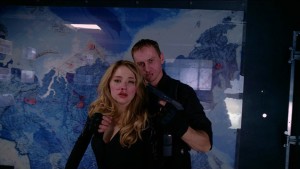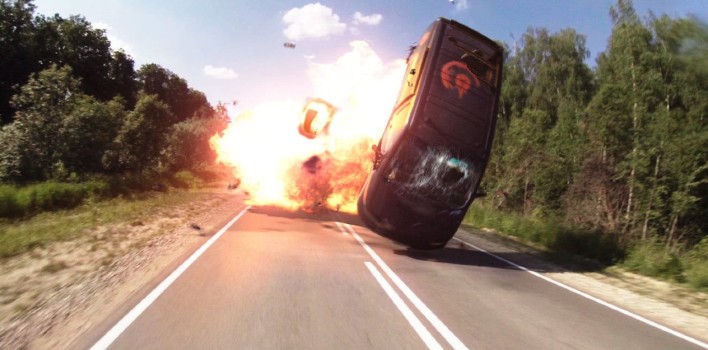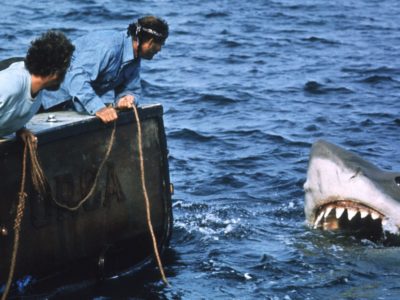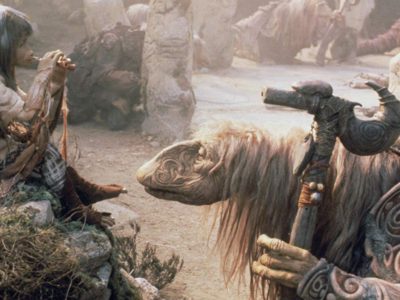Review| Hardcore Henry
 Billed as a wildly-innovative, first-person shooter film, Hardcore Henry is a film that certainly lives up to its title. It is hardcore in almost every sense of the word. The action is nonstop and pulse-pounding; the violence is gratuitous and over-the-top; The first-person point of view works surprisingly well, avoiding the gimmicky feel I initially feared it would bring to the film. ( A word of caution is in order, however: if you are the type of person who is prone to motion sickness, you are going to want to steer clear of this film at all costs.) But regardless of whatever innovations it may or may not bring to the genre, Hardcore Henry ultimately feels like one of those films destined to fade from memory as time goes by.
Billed as a wildly-innovative, first-person shooter film, Hardcore Henry is a film that certainly lives up to its title. It is hardcore in almost every sense of the word. The action is nonstop and pulse-pounding; the violence is gratuitous and over-the-top; The first-person point of view works surprisingly well, avoiding the gimmicky feel I initially feared it would bring to the film. ( A word of caution is in order, however: if you are the type of person who is prone to motion sickness, you are going to want to steer clear of this film at all costs.) But regardless of whatever innovations it may or may not bring to the genre, Hardcore Henry ultimately feels like one of those films destined to fade from memory as time goes by.
Shot entirely in a first-person perspective, and thus establishing the viewer as the title character, the film begins by pulling you out of a dream and into consciousness. The camera-eye pans back and forth as a woman—your wife (Haley Bennett)—calls your name, “Henry.” She screws artificial limbs onto you while explaining that you were in an accident. This, the most tender, contemplative segment of the film, is short-lived: The facility in which you have been resurrected is broken in to, your wife taken. Dead-set on revenge, you set out to rescue the girl and inflict pain on your foes.
Hardcore Henry is at its best when it is not trying to be edgy, which is not often enough. The majority of the film is so hell-bent on bludgeoning us with endless cycles of gory violence that it forgets to give us any real reason to care about what’s happening. When you first see a man meet a brutal end right in front of your face, it’s shocking—-not so much the second, third, fourth, fifth, sixth, seventh, eighth, or billionth time. And when the final showdown rolled around, I was yawning and looking at my watch; the edge had worn off.
Nevertheless, Hardcore Henry is not without its charms. Sharlto Copley—who plays a pivotal character named Jimmy—is the real fire and lifeblood of this film. He brings a humor and energy that is sorely missed when he is not onscreen. At one point he does an uproariously funny, sidesplitting song-and-dance number that is almost worth the price of admission on its own. If there is an affecting emotional undercurrent to Hardcore Henry, it’s thanks to Copley’s character and not Henry’s search for his wife.
The film also does some truly effective and unique genre-bending. There is a strong Sci-Fi component at play in Hardcore Henry. It’s difficult to say much more about how this aspect of the film works without spoiling some of the narrative twists and turns, but suffice it to say that I had more fun puzzling out some of the implied details of the world in which the film is set than watching the action unfold. 
What is most disappointing about Hardcore Henry, however, is that it spoils most of the opportunities it has—as a first-person narrative—to create a thoughtful subtextual meditation on the myth of redemptive or regenerative violence, the idea that we can, through bloody revenge, find redemption or renewal. Establishing the viewer as the perpetrator of these violent deeds is a brilliant vehicle through which themes of vengeance and justice and the notion of bloodshed as a pathway to salvation could be explored; but in spite of all of the shooting in the film’s hour-and-a-half runtime, Hardcore Henry misses the mark where it counts. Apparently it’s just more fun to blow someone’s head off.







